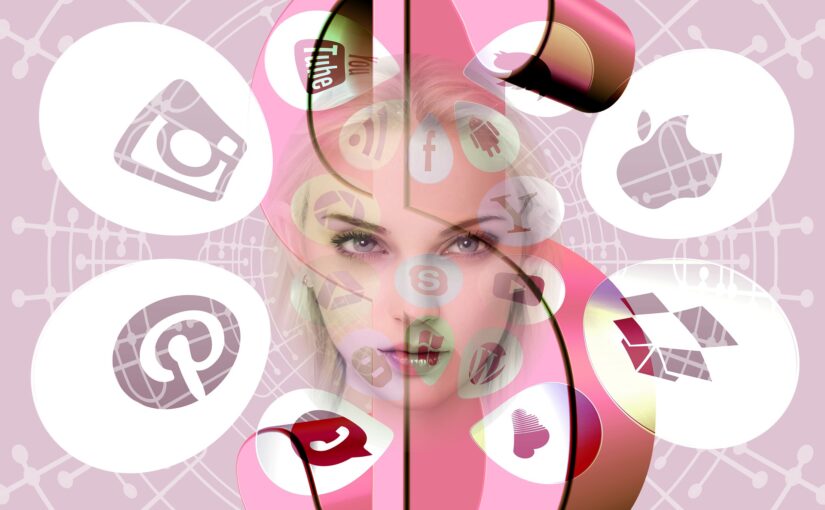In my postdoctoral research, I’m particularly interested in studying social media influencer communication from a gender perspective. In this blog post, I’m going to discuss the reasons why I think this is important.
- Unfortunately, sexism and gender-based harassment take place frequently on social media platforms. Previous research has observed these challenges especially in the context of online gaming (Cote 2017; Naidoo et al. 2019). However, female social media influencers have also been found to receive sexualizing and sexist comments (Drenten et al. 2020). Research can draw attention to such issues and help in finding solutions.
- The media also appears to talk about female influencers differently. Deller and Murphy (2020, 125) note that areas of content creation that are considered “feminine” have been criticized as “frivolous” in the press, whereas the criticisms towards male influencers’ work are not as clearly gendered. However, more research is needed to find out how attitudes towards different genders shape the public discussion on influencers.
- Influencers’ gender also affects the way their followers view them. For example, in a recent study, Hudders and De Jans (2020) found that women are more likely to engage with social media content posted by influencers who are also women. Studying influencer communication from a gender perspective may help us understand influencer-follower relationships better.
- Social media work involves a lot of “invisible” labor that is often done by women. “Invisible” labor in this context refers to work that is overlooked, undervalued and often poorly paid (Duffy & Schwartz 2018, 2976). For example, creative social media workers might be expected to work for “exposure” instead of receiving actual payment. Research can help promote gender equality in social media work.

How will my own work add to the research on influencers and gender?
Through my work, I hope to contribute to the research on social media influencers and gender by examining a genre of content creation that is particularly popular among young women, yet often belittled and overlooked: the genre of beauty content. Creators in this genre are easily dismissed as “superficial” or “vain” (Abidin 2016), but their work has the potential to empower people and to question gender norms.
For example, many beauty-focused influencers (particularly women) are balancing between “fashioning” or “beautifying” the body and promoting acceptance of the body “just the way it is”. Even though the fashion and beauty industries can be viewed as problematic, since they enforce particular ideas of what people (especially women) should look like, many influencers have taken a different approach to the idea of beauty.
These influencers have adopted their ideas from the body positivity movement, which seeks to challenge beauty standards in society and increase the visibility of marginalized bodies in the media (e.g., Brathwaite & DeAndrea, 2022; Sastre, 2014). Through combining body positivity activism and beauty- and fashion-focused social media content, influencers are able to redefine both beauty norms and gender norms. I am interested especially in the ways in which influencers do this through their language use.
Finally, although there are already several interesting studies on the topic of influencers and gender, there is a lot more work to be done. For example, while my own research focuses on women, the specific experiences of male influencers, as well as non-binary or genderqueer influencers, should also be considered in future studies.
References
Abidin, C. (2016). “Aren’t these just young, rich, women doing vain things online?” Influencer selfies as subversive frivolity. Social Media + Society 2(2). https://doi.org/10.1177/2056305116641342
Brathwaite, K. N., & DeAndrea, D. C. (2022). BoPopriation: How selfpromotion and corporate commodification can undermine the body positivity (BoPo) movement on Instagram. Communication Monographs 89(1), 25-46. https://doi.org/10.1080/03637751.2021.1925939
Deller, R.A., & Murphy, K., (2020). ‘Zoella hasn’t really written a book, she’s written a cheque’: Mainstream media representations of YouTube celebrities. European Journal of Cultural Studies 23(1), 112-123. https://doi.org/10.1177/1367549419861638
Drenten J., Gurrieri L., & Tyler, M. (2020). Sexualized labour in digital culture: Instagram influencers, porn chic and the monetization of attention. Gender, Work & Organization 27, 41–66. https://doi.org/10.1111/gwao.12354
Duffy, B. E., & Schwartz, B. (2018). Digital “women’s work?”: Job recruitment ads and the feminization of social media employment. new media & society 20 (8), 2972–2989. https://doi.org/10.1177/1461444817738237
Naidoo, R., Coleman, K. and Guyo, C. (2019). Exploring gender discursive struggles about social inclusion in an online gaming community. Information Technology & People 33 (2), 576-601. https://doi.org/10.1108/ITP-04-2019-0163
Sastre, A. (2014). Towards a radical body positive. Feminist Media Studies 14(6). 929-943. https://doi.org/10.1080/14680777.2014.883420
